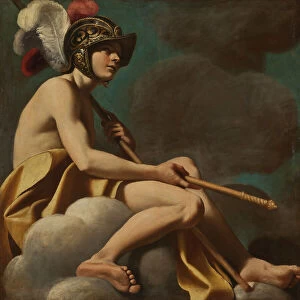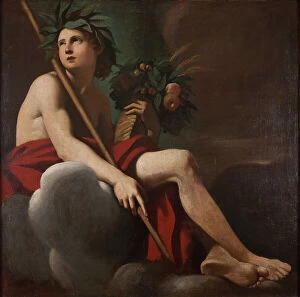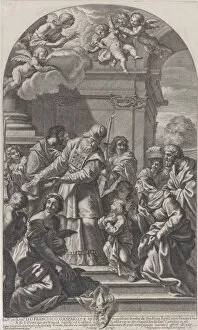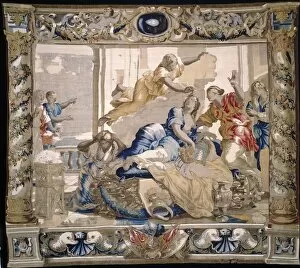Giovanni Francesco Romanelli Collection
Giovanni Francesco Romanelli, an Italian artist born in 1610, was a master of capturing powerful and emotional scenes on canvas
All Professionally Made to Order for Quick Shipping
Giovanni Francesco Romanelli, an Italian artist born in 1610, was a master of capturing powerful and emotional scenes on canvas. One of his notable works is "The Massacre of the Innocents, " painted around 1631. In this haunting piece, Romanelli depicts the tragic biblical event with vivid detail and raw emotion. Another remarkable artwork by Romanelli is "Three women pulling in the basket with the infant Moses from the water, " created around 1729. This painting showcases his ability to portray tender moments filled with hope and compassion. Romanelli's talent extended beyond religious subjects as seen in "The Sacrifice of Polyxena. " This captivating piece reveals his skill in depicting dramatic narratives from Greek mythology. In addition to these historical and mythological themes, Romanelli also explored classical literature through paintings like "Venus tells Aeneas and his friend Achates to go to Carthage" and "Mercury tells Aeneas to Leave Carthage. " These artworks capture pivotal moments from Virgil's epic poem, The Aeneid. One of Romanelli's most poignant works is "The Death of Dido, " completed in 1679. With expert brushstrokes, he portrays Queen Dido's heart-wrenching demise after being abandoned by her lover Aeneas. "Dido Sacrifices to Juno" showcases another significant moment from The Aeneid where Dido seeks divine intervention for her love affair with Aeneas. Through this painting, Romanelli captures both devotion and desperation beautifully. Romanelli's artistic prowess shines once again in "Dido and Aeneas. " This composition portrays their ill-fated romance amidst grandeur settings that reflect their respective roles as queen and hero. Furthermore, we see Romanelli's attention to architectural details in pieces such as "Dido shows Aeneas the plans for the fortifications of Carthage. " Here he combines his artistic skills with a keen eye for historical accuracy.



















